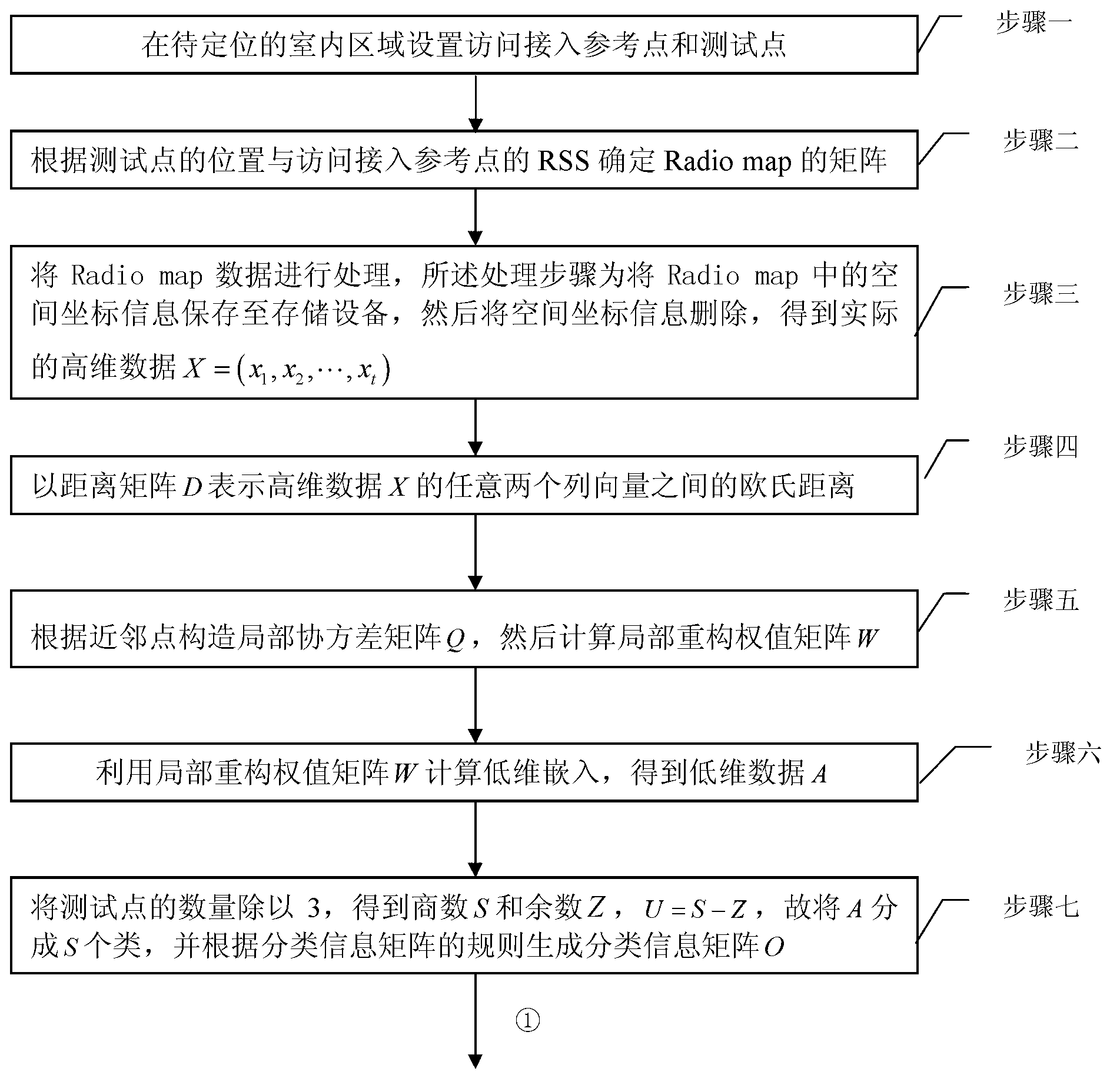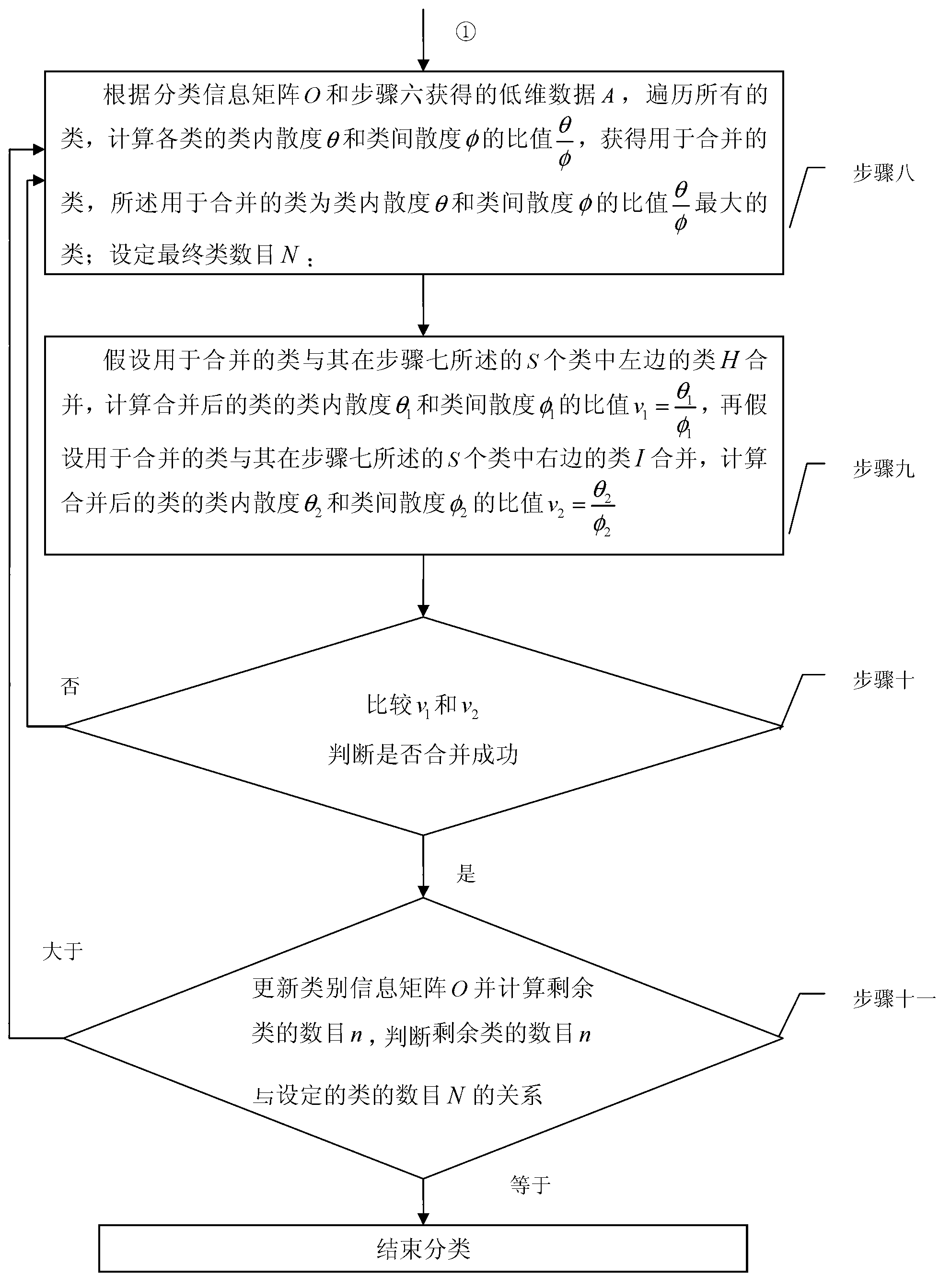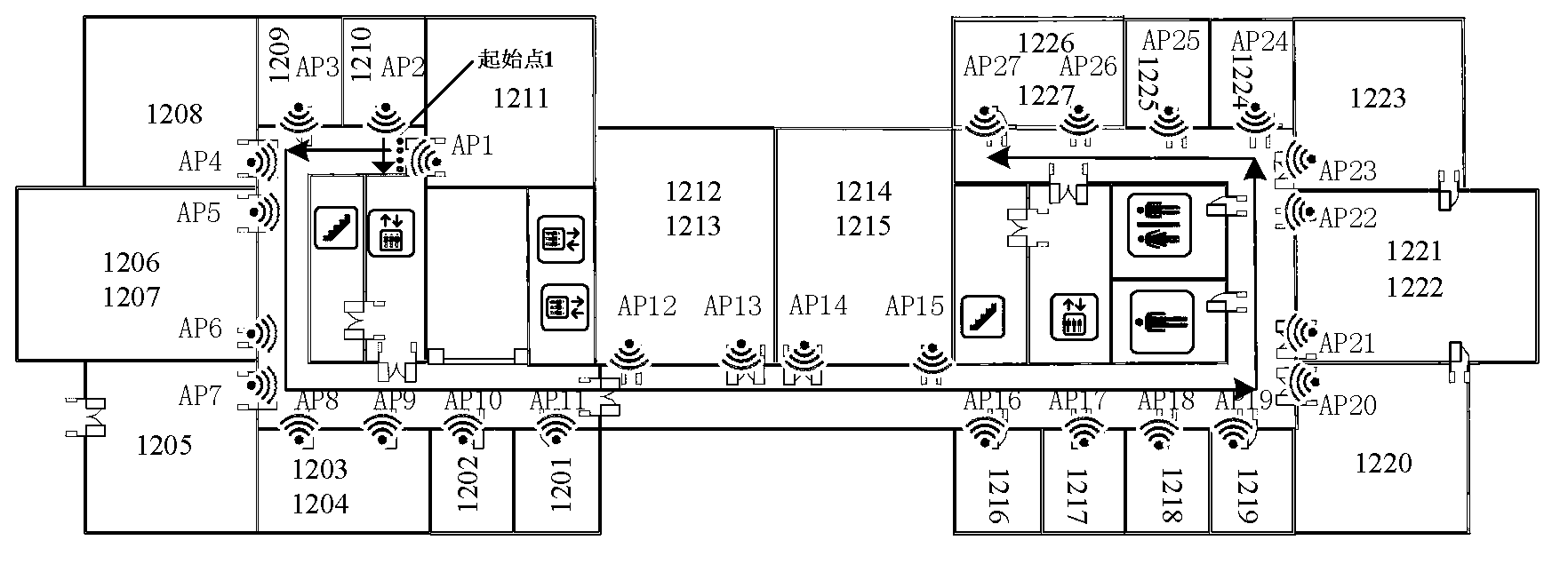Local linear embedded algorithm based radio frequency map unsupervised classifying method
A local linear embedding, radio frequency map technology, applied in computing, special data processing applications, instruments, etc., can solve the problem of high labor cost
- Summary
- Abstract
- Description
- Claims
- Application Information
AI Technical Summary
Problems solved by technology
Method used
Image
Examples
specific Embodiment approach 1
[0041] Specific implementation mode 1. Combination figure 1 This specific embodiment will be described. A radio frequency map unsupervised classification method based on local linear embedding algorithm, it comprises the following steps:
[0042] Step 1: Set access reference points and test points in the indoor area to be positioned, the height of the access reference points is 2-2.5 meters from the ground, and the density of test points is 3-5 points / square meter;
[0043] Step 2: Determine the matrix of the Radio map according to the position of the test point and the RSS of the access reference point;
[0044] If there are t test points in total, the Radio map is α=(α 1 , α 2 ,...,α j ,...,α t ), α 1 , α 2 ,...,α t Both are column vectors, j is the sequence of test points; where, α 1,j , α 2,j They are the abscissa and ordinate of the spatial position of the jth test point, respectively, and the spatial information of the test point is continuous; the continuous s...
specific Embodiment approach 2
[0071] Embodiment 2. This embodiment is different from Embodiment 1 in that the value of the K column vectors in Step 4 is K=6 or 7.
specific Embodiment approach 3
[0072] Embodiment 3. The difference between this embodiment and Embodiment 1 is that the calculation process of the intra-class divergence θ described in step 9 is:
[0073] Set the center of the class, which is the point in a class with the smallest Euclidean distance sum to all points of the class;
[0074] Let B=(b 1 , b 2 ,...,b i ,...,b n ) is a category, and b m is the center of class B, and the intra-class divergence θ is the center b m The average of the Euclidean distances to all points in B, namely
[0075] θ = Σ i = 1 n d ( b m , b i ) n - - - ...
PUM
 Login to View More
Login to View More Abstract
Description
Claims
Application Information
 Login to View More
Login to View More - R&D
- Intellectual Property
- Life Sciences
- Materials
- Tech Scout
- Unparalleled Data Quality
- Higher Quality Content
- 60% Fewer Hallucinations
Browse by: Latest US Patents, China's latest patents, Technical Efficacy Thesaurus, Application Domain, Technology Topic, Popular Technical Reports.
© 2025 PatSnap. All rights reserved.Legal|Privacy policy|Modern Slavery Act Transparency Statement|Sitemap|About US| Contact US: help@patsnap.com



